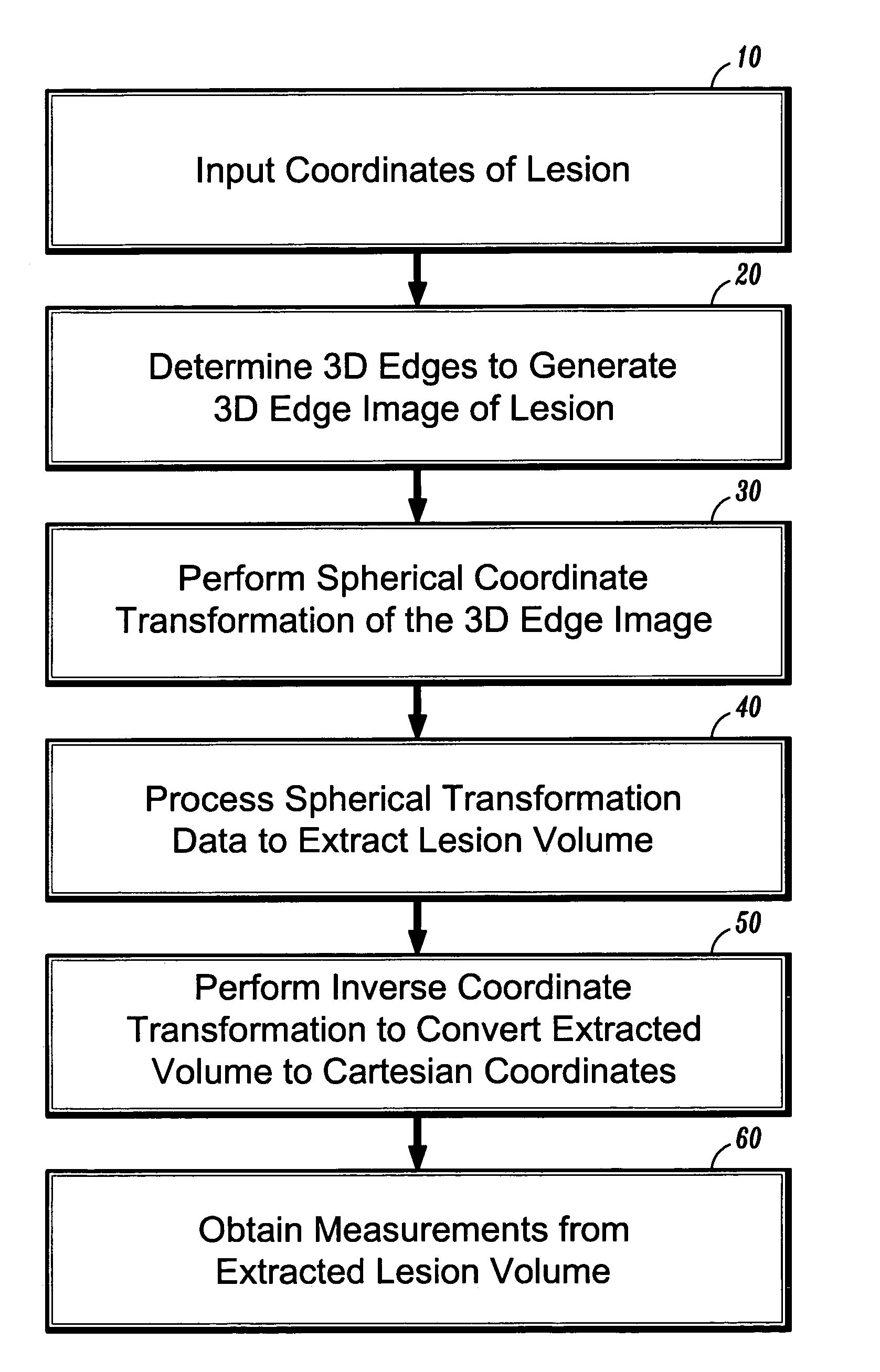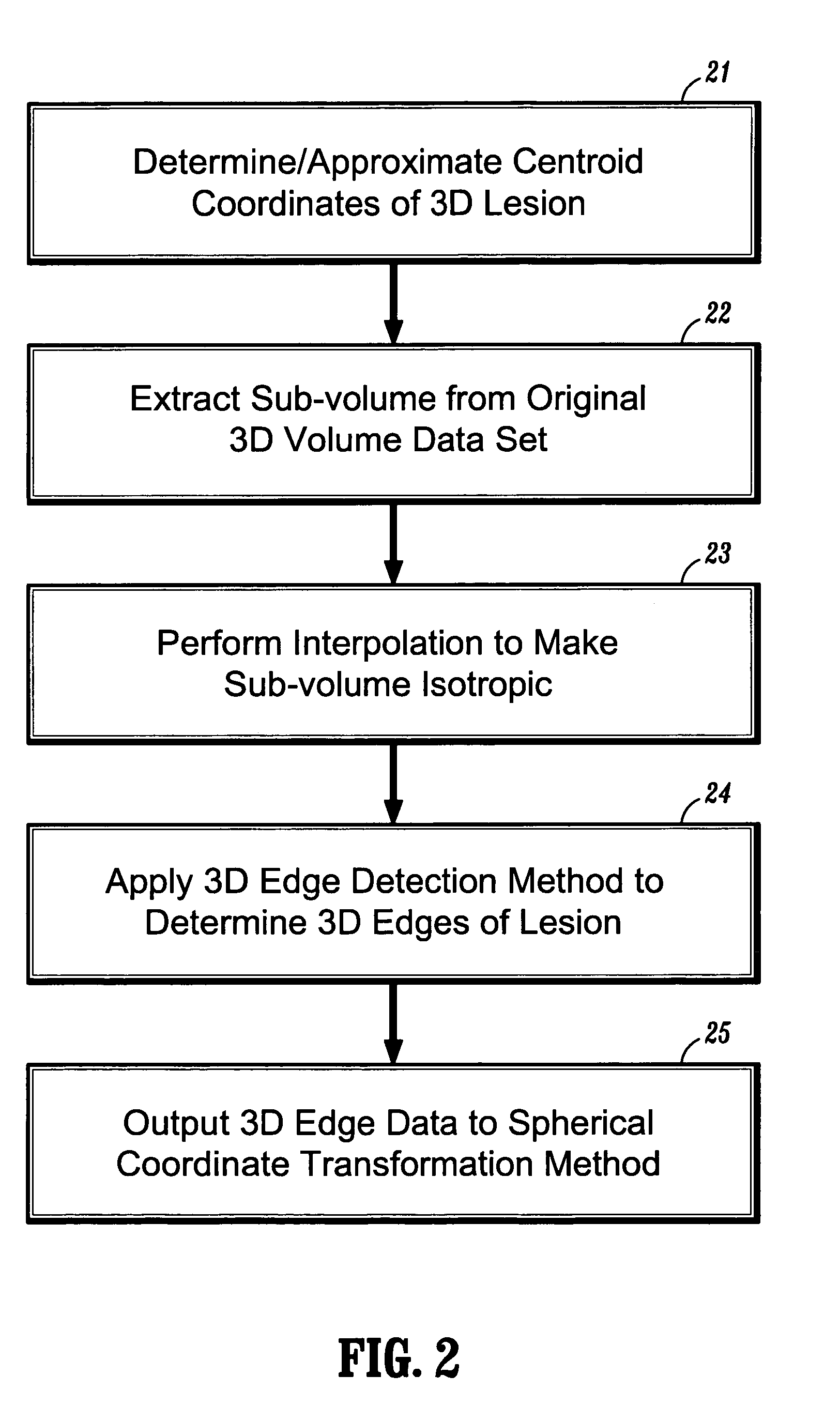Systems and methods for providing automatic 3D lesion segmentation and measurements
- Summary
- Abstract
- Description
- Claims
- Application Information
AI Technical Summary
Benefits of technology
Problems solved by technology
Method used
Image
Examples
Embodiment Construction
[0024]In general, exemplary embodiments of the invention as described herein include systems and methods for automatic 3D segmentation of abnormal anatomical structures such as colonic polyps, aneurisms or lung nodules, etc., in 3D medical imaging applications. In one exemplary embodiment of the invention described herein, a system and method for 3D lesion segmentation implements automated methods for spherical coordinate transformation of a 3D edge image and subsequent interpolation of a lesion surface, which enables an accurate determination of a boundary between a lesion of interest and surrounding normal anatomical tissue and structures.
[0025]Further, exemplary systems and methods according to the invention provide methods for automatically measuring various dimensions and characteristics of 3D segmented lesions, which can be implemented for purposes of identification or automatic classification based on the extracted lesion volume. In particular, systems and methods according t...
PUM
 Login to View More
Login to View More Abstract
Description
Claims
Application Information
 Login to View More
Login to View More - R&D
- Intellectual Property
- Life Sciences
- Materials
- Tech Scout
- Unparalleled Data Quality
- Higher Quality Content
- 60% Fewer Hallucinations
Browse by: Latest US Patents, China's latest patents, Technical Efficacy Thesaurus, Application Domain, Technology Topic, Popular Technical Reports.
© 2025 PatSnap. All rights reserved.Legal|Privacy policy|Modern Slavery Act Transparency Statement|Sitemap|About US| Contact US: help@patsnap.com



